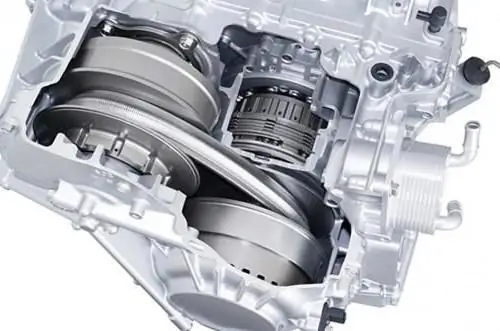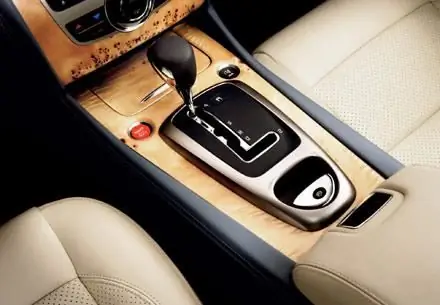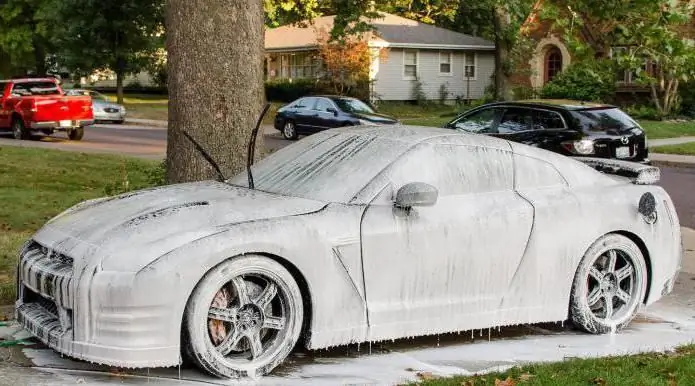2026 Author: Erin Ralphs | [email protected]. Last modified: 2025-01-22 21:14:09
The transmission of the car is assigned to transfer torque from the engine to the driving wheels of the car. In this case, the magnitude of the torque changes. In a front-wheel drive car, the front wheels are driving, the torque is supplied to them, in a rear-wheel drive car, to the rear. Cars that use all four wheels with torque are all-wheel drive.
The transmission of a car is technically quite a multifunctional mechanism, which, in turn, involves smaller connections. It includes: clutch, gearbox, various joints, differential, cardan shaft (which is used only in rear-wheel drive cars, to connect the rear wheels to the engine). And "grenades" are equal angular joints, they are used only in front-wheel drive cars.

Transmission functions:
- to transmit torque from the engine to the drive wheels;
- changes the direction of the torque and its magnitude;
- distribution between the wheels of torque.
The transmission of a car in our time must have high reliability with minimal production costs. Therefore, the requirements for its quality are quite high. According to the energy conversion, transmissions are divided into the following types:

- mechanical, serves to transmit and convert torque;
- electrical, converts mechanical energy into electrical energy, transfers it to the drive wheels, again switches from electrical to mechanical;
- combined, there is electrical and hydromechanical energy;
- hydrostatic, with the help of mechanical energy creates a fluid flow, entering the drive wheels, goes back to mechanical.
More used in cars is manual transmission.
The transmission that changes torque automatically is called "automatic transmission".

Drive wheels can be front, rear, or both.
When using only the front - front-wheel drive car.
When using the rear - rear-wheel drive.
The transmission structure itself is different and depends on the drive wheels.
So understand and understand what a transmission is before making your choice.
The rear-wheel drive car has the following nodes:
- gearbox;
- clutch;
- main gear;
- cardan gear;
- half shaft;
- differential.
The front wheel drive car includes:
- gearbox;
- clutch;
- main gear;
- differential;
- drive shafts"half shafts";
- hinges.
In a front-wheel drive car, a differential with final drive is located in the gearbox.
Hinges (flexible connection of parts) transmit torque to the wheels from the differential, which are leading. When connected to the differential, two more hinges are used. They complete the transfer of torque to the wheels.
The automatic transmission of a car today is more expensive to manufacture, so much attention is paid to its development and improvement. This is the trend of today's world. She is more secure. In urban traffic, the driver gets tired less.
Recommended:
Automatic transmission - how to use? Automatic transmission switching and control modes

Today, many novice drivers, and motorists with experience, choose a car with an automatic transmission. Beginners are often afraid of the very need to shift gears while driving, experienced drivers have appreciated the possibilities of calm and measured movement in a car equipped with automatic transmission
Types of antifreeze. Composition, characteristics, purpose

Antifreeze (from the English “freeze”) is a collective term for special liquids designed to cool units that heat up during operation - internal combustion engines, industrial plants, pumps, etc. when operating below zero. There are many different types of antifreeze. These liquids are characterized by a very low freezing point and a high boiling point
The automatic transmission device of a car and the principle of operation. Automatic transmission types

Recently, automatic transmissions are gaining more and more popularity. And there are reasons for that. Such a box is easier to operate and does not require constant “play” with the clutch in traffic jams. In large cities, such a checkpoint is far from uncommon. But the automatic transmission device is significantly different from classical mechanics. Many motorists are afraid to take cars with such a box. However, the fears are not justified. With proper operation, an automatic transmission will last no less than mechanics
Penetrating lubricant: purpose, composition, advantages and disadvantages

Penetrating spray cans can be found in the trunk of almost any car these days. Why did these liquids become so popular? What advantages and disadvantages they have will be discussed in this article
Rating of active foam for car washing. Foam for washing the car "Karcher": reviews, instructions, composition. Do-it-yourself car wash foam

It has long been known that it is impossible to clean a car from heavy dirt with plain water. No matter how hard you try, you still can't achieve the desired purity. In order to remove dirt from hard-to-reach places, special chemical compounds are used to reduce surface activity. However, they also cannot reach very small cracks and corners

